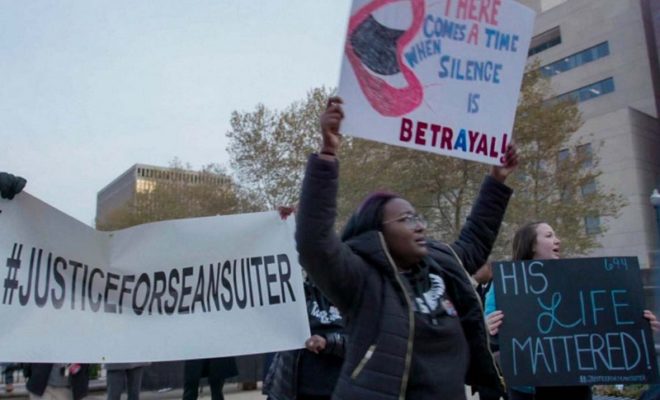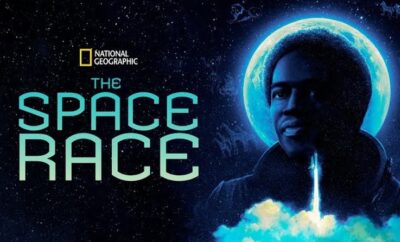
Movie Reviews
The Slow Hustle
By: Kelly Kearney
Baltimore, Maryland – The home of crab cakes, Camden Yards, “Hons” and a sewage pipeline of corruption that runs from city hall down through the ranks of its infamous police department. When it comes to national debates about corrupt policing in America, Baltimore is always the first name on everyone’s lips and for good reason. “Charm City,” as its nicknamed, has a checkered history of public servant criminality that goes a long way towards dulling that harborside city’s shine. Freddie Gray was the name on the nation’s lips as the city of Baltimore burned in agony over another black man’s life taken too soon. The acquittal of the police in that case set the streets ablaze, but the reality of life in Baltimore, like every town and city in America, is more complex than “rough rides” and burned down corner stores. It is a city that is rooted in American history and was grown in the fields of diversity with its people starving for their voices to be heard. Even after the smoke cleared and the city began to rebuild the rumors of dirty cops and brutality were still the main conversations coming from the stoops of every row home from the Roland Park to Harlem Park. Those whispers about dirty cops grew to a roar when Officer Sean Suiter was killed in the line of duty. The questions swirling around the officer’s death are the focus of director and star of the Baltimore based crime drama “The Wire,” Sonja Sohn’s documentary. Sohn, who was fresh off the success of her earlier work Baltimore Rising, dissects the shocking and multilayered scandal surrounding Sean Suiter’s death and its possible ties to the indictment of eight disgraced police officers on trial. The Slow Hustle, in all of its shocking and enraging glory, asks the question: Who killed Sean Suiter and why? Unfortunately, the answers are as murky as the water in Baltimore’s Inner Harbor, but the possibilities Sohn lays out in this provocative piece could rattle the very foundations of policing in America for years to come.
The Shot Heard ‘Round East Baltimore
It was sunny day November 15, 2017, when Officer Sean Suiter was shot and killed in the line of duty. Suiter, a veteran with the Baltimore Police Department, was accompanying a rookie cop on a call about a drug deal case. As the two pulled up to the neighborhood of Harlem Park, in East Baltimore, Suiter exited the car and went between a group of buildings looking for a suspect who was seen in the area. Alone, and holding his police issued radio and weapon, shots rang out leaving Sean dead with a bullet to the head and not a suspect in sight. His partner, who we see on police cams, was visibly shaken; claiming he never heard or saw a shooter fleeing from the scene. Chaos ensued as a city-wide manhunt for the killer shut down Harlem Park and turned a residential neighborhood into a warzone under siege. For a full week locals were barricaded in their homes as the Baltimore Police smashed their way through private residences – some looking for clues and others being used as base camp for sharp shooters prepared to take out a suspect they had virtually no information on. The city was on lockdown and protections under the Constitution were non-existent as the military style tanks occupied the streets of the American city. The temperatures between the locals and the BPD were climbing, but across town a different mood was taking hold; one of reverence for a hero’s life lost. The city came out in droves to put Officer Sean Suiter to rest, and his funeral was a publicly televised mourning that felt a bit like a Band-Aid on the wounds still seeping from Freddie Gray. After the funeral, and with no leads to go on (not even a bullet strike mark at the scene), the case of who killed Officer Suiter quickly ran cold. The manhunt ended in no clues and no arrests, which led to rumors and conspiracies that littered the online forums until they jumped to the local news. Eventually, the idea of suicide was presented to the Suiter family, but swearing Sean was stable and not depressed meant that could not be true. The police considered the possibility that Suiter made his suicide look like a murder so that his family would get his life insurance benefits, but considering the time of day, the presence of his partner and the position of his body suicide seemed like a lazy answer to a problem that began long before Sean died.
A Gang of Brothers in Blue
Chocked full of images of police brutality and riot footage, Sohn gives ample film time with Suiters’ friends and family as well as locals who had their own ideas on what motivates the BPD with a picture of what was going on in Sean’s life coming into focus. The day after he tragically died Sean was scheduled to testify against his fellow cops who were running a crime racket of masked robberies, stolen and planted drugs and a high-speed chase that ended in an innocent person’s death. The fatal car accident was covered up to look like a hot pursuit car accident, but it was anything but. These agents of police chaos worked more like a gang of thieves in blue, turning the already crime heavy streets into a virtual killing fields of lawless disorder. These eight officers weren’t new to the force. They were some of Baltimore’s most decorated members assigned to the elite Gun Task Force. Their job was to take as many guns off the streets as they could find. How they went about it was the issue, but not for their superiors in the precinct who were more than happy to take the credit for helping to curb Baltimore’s gun violence. A collective turn of the blind eye kept the wheel of justice turning and Sean, who worked with all eight indicted cops, had information the justice department wanted him to share about the crash as well as other crimes the eight were accused of.
The twists and turns to this case could fill a book, but Sohn manages to thoroughly flush out each of them in expert detail. Sean Suiter was a highly respected officer, but in a department where its own ex-Police Commissioner, Kevin Davis, lacked trust in the members of the force and beyond which included the politicos in city hall who benefit from the BPD’s perceived successes. Respect plays differently in Baltimore and every moment of this film you see even the most respected community leaders have suspicions about the BPD’s procedures. Local news anchor Jayne Miller goes into detail about Sean’s testimony, starting with the FBI’s subpoena. Apparently, Sean raised some red flags when he failed to cooperate with their initial line of questioning about the gang of eight, so his testimony was not voluntary and that is just one of the endless surprises that popped up in this case. One of the accused, Officer Gondo, pointed the finger at Sean naming him as an accomplice to a robbery. It was unclear if Suiter knew he was named a possible suspect in the case, but it conveniently led the police to assume his death was a perfectly planned suicide to avoid jailtime. With everyone pointing fingers at someone the case went to an independent review board while Mrs. Suiter was stuck in limbo over her husband’s police benefits. The city coroner’s office (to this day) says the cause of death was homicide, but the police are firmly convinced it was a suicide and the Independent Review Board agreed, not that they did a thorough review. Endless pieces of evidence continued to trickle out of the cracks in this case, each one ignored or deflected from whenever the media in town questioned it. The case was closed, but with so many questions left unanswered the Suiter family and the local critics of the police department cannot put the shooting of Officer Suiter to rest. Was Sean murdered to block his testimony? Did he die by suicide to avoid jail? Was it an unknown assailant selling drugs behind the building in Harlem Park who killed him? Was Sean involved in the gang of eight, or was he a good cop trying to do the right thing in court? Truth buried in a mountain of lies takes time to dig out, but if nobody is willing to pick up a shovel there isn’t much the Suiter family can do about it.
No Justice, No Peace
Peeling back the layers of the case, with local interviews from police reporters on the crime beat and TV anchors like Jayne Miller, go a long way towards legitimizing the narrative Sohn is building, not to mention giving credence to the idea that a reboot of policing in America is the only path to justice. With an endless pit of unanswered questions, Sohn paints a vivid picture of a city led by power hungry political climbers willing to do anything for their own personal glory. For those outside of Baltimore who were taught that the policing in America was born out of good guys vs. bad guys, you would be hard pressed to find those white hats in this tragic environment. The problem, which The Slow Hustle expertly unfurls, is that the truth in this case can never be found if the BPD is motivated to lie and cover up their crimes. One apple can spread its rot to the whole bushel and without accountability that rot risks spreading across the entire city landscape. Justice is not found in the cracks of a system broken from oppression and aggression, and it cannot be patched together with ego and greed or sewn into a city by power hungry suits in City Hall. It takes a cultural reckoning and a heavy dose of truth to make peace with the current justice system in the city of Baltimore and no amount of Old Bay seasoning can make that truth taste good. If you find you are hungry for change and want to quell your appetite with a documentary that lays out the blueprints for why it needs to happen, The Slow Hustle is the non-fiction drama so unbelievably fiction-like that you cannot miss it.




You must be logged in to post a comment Login